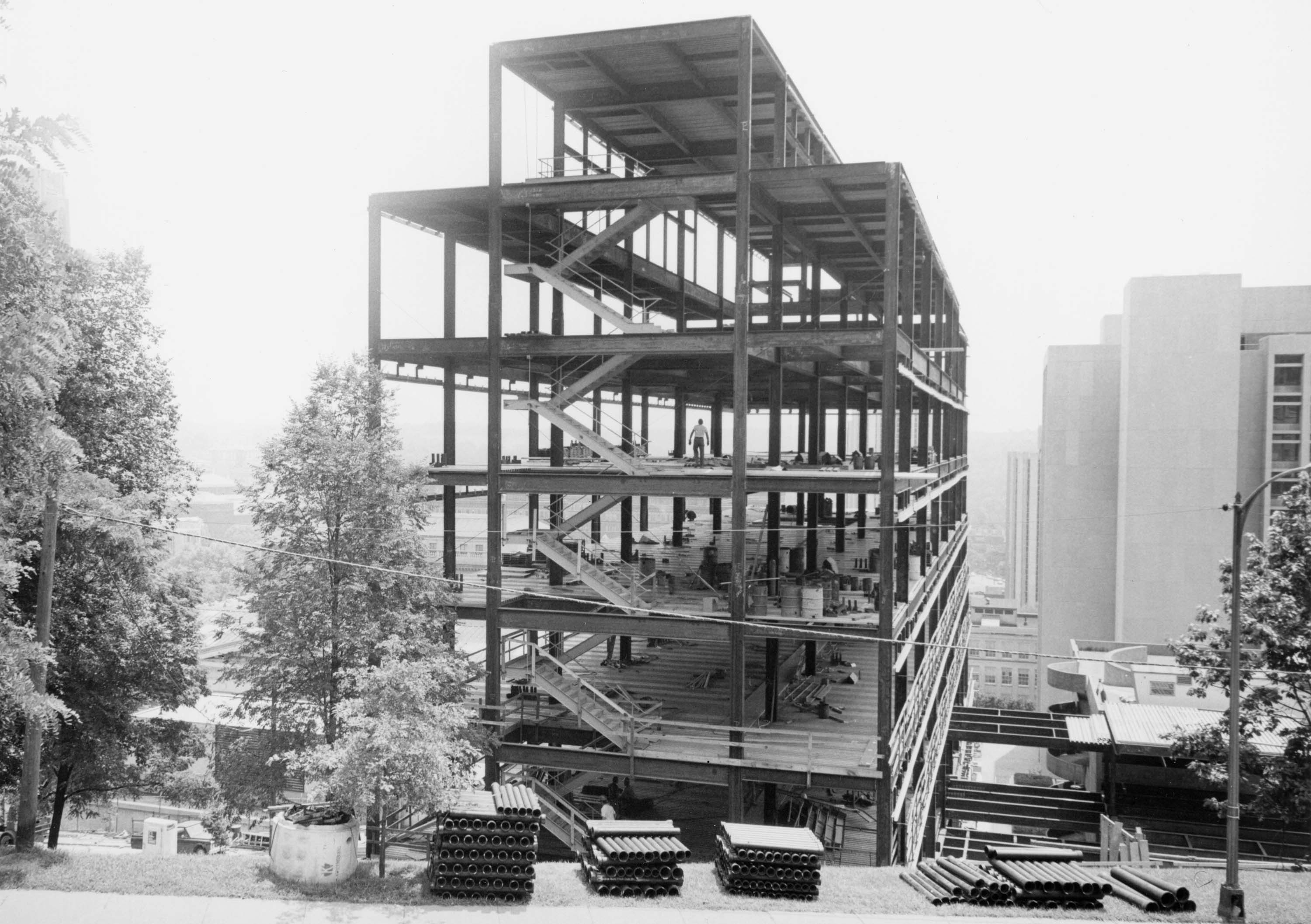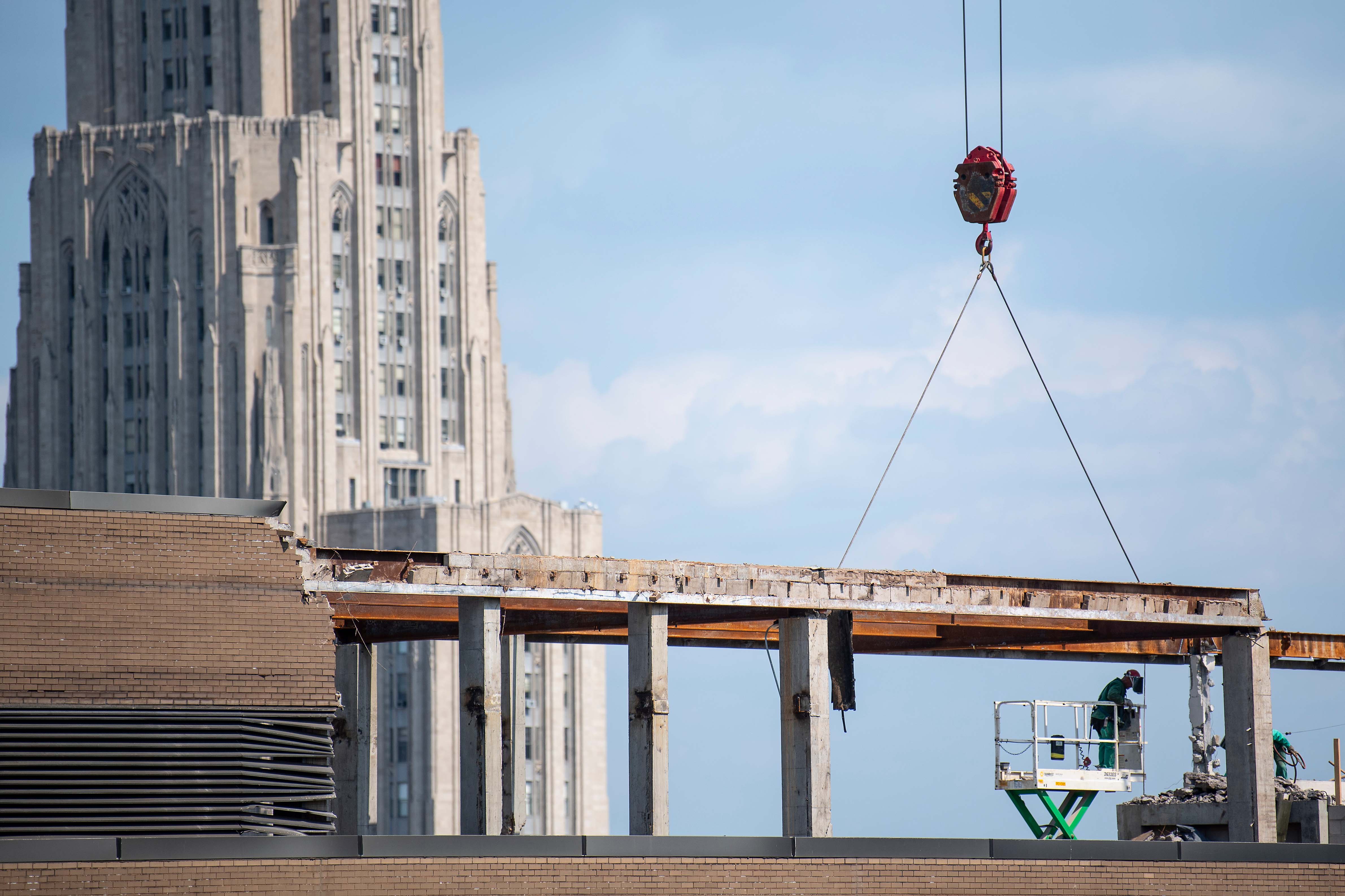 The arm of a huge yellow excavator rears back and then, with a shuddering crunch, bites into the campus building. It twists and tears away a hunk of metal, then drags it to the side and onto a pile of rubble. On O’Hara Street in Pittsburgh, the winter air is filled with the metal-grinding soundtrack of major demolition. The distinctive building that once housed Pitt’s Learning Research and Development Center (LRDC) — and generations of scholars, collaborators, international visitors and staff — is coming down.
The arm of a huge yellow excavator rears back and then, with a shuddering crunch, bites into the campus building. It twists and tears away a hunk of metal, then drags it to the side and onto a pile of rubble. On O’Hara Street in Pittsburgh, the winter air is filled with the metal-grinding soundtrack of major demolition. The distinctive building that once housed Pitt’s Learning Research and Development Center (LRDC) — and generations of scholars, collaborators, international visitors and staff — is coming down.
Even intact, the structure easily captured the attention of passersby. Opened in 1974, the building was believed by many to be ... odd-looking. Over the years, it was likened to an old-fashioned cash register and a hulking cruise ship jutting over the sidewalk. Some said it looked like a massive staircase — which makes sense. The building’s original design included a large escalator along one exterior wall meant to transport students up the hill to nearby residence halls.
The boundary-pushing architecture was intended to reflect the innovation unfolding on the inside. When it was founded, the LRDC was one of the world’s first institutions dedicated to the study of learning and instruction. Funded by Pitt and the U.S. Department of Education, the center recruited scholars from all over the world with the mission to improve education for all by understanding how people learn.
In recent years, however, the building’s age and structural quirks began to take a toll. Demolition began in August 2021.
It may have been odd-looking, but it was beloved by many.
PhD student Erin Gatz, who studies how informal, out-of-school learning happens in makerspaces and hacker spaces around the world, says she will miss the eighth floor. That’s where her office and classes were, and where she often found instant collaboration — like the time a peer gave her a quick tutorial for a coding program on the fly. Or the many times she talked through inquiries about learning with colleagues and advisors.
Connecting with others was easy in the LRDC building. The funky midcentury interior helped foster community, with inviting lounge areas and long hallways where people chatted while waiting (sometimes quite a long time) for the elevator.
Collaborative work was often behind the influential research done by affiliated faculty and students. For example, LRDC researchers (who hold joint appointments in departments across the University) helped pioneer the use of cognitive psychology in teaching, exploring the role of psychology in learning and problemsolving — a radical concept at the time.
“The community that we created there among grad students, faculty and staff was really valuable to my growth,” Gatz says.
She knows she isn’t the only one who feels that way.
Though the building will soon be gone, the LRDC is here to stay. The offices and research spaces have been temporarily relocated until permanent new digs are ready in the Sennott Square building. Meanwhile, an exciting facility is planned for the old LRDC lot. A state-of-the-art recreation and wellness center is expected to open there in 2024.
Back on O’Hara Street, where the excavator is still busy moving piles of debris, sophomore civil engineering student Ian Shaner is on the sidewalk, watching the demolition with interest. He notes the systematic way the building is being dismantled — how the walls, windows, wires and other pieces are torn out while columns and other structural supports remain. This is purposeful, he thinks, to keep the essential core until the very end.
“It will be sad to lose this iconic building,” says Elizabeth Rangel, the center’s director of communications. “But LRDC will make its new space into the kind of environment that will nurture the spirit of collaborative inquiry that has always fueled its mission of ‘understanding learning and improving education.’”
Going Up
Reminisce on one of the Pittsburgh campus’s most iconic buildings.






Coming Down







This story was posted on January 12, 2022. It is from Pitt Magazine’s Winter ’21-’22 issue.




